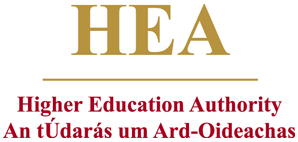An Muileann Iarainn - Seán Mag Uidhir
Recording: [Download audio file]
[Download AIFF audio file (of processed ‘user’ version)]
[Download AIFF audio file (of archive version)]
Transcript
Triúr Sasanaigh ' tháinig aniar 'uig baile comhgarach dhon áit a bhfuil mise i mo chónaí. Agus fuair siad iarann faoin tsliabh ann. Agus thoisigh siad a rith an iarainn agus dá leaghadh. Agus chuir siad suas muileann agus bhí siad ag déanamh neart airgead ins an áit ach ní bhéarfadh siad obair do dhuine ar bith ach duine dá seort féin. Bhí fear insa chomharsa sin a dtugadh siad Traolach Buí air, agus níl rud ar bith a d'iarrfadh sé ar na daoiní maithe a bhí thuas ar bharr an tsléibhe, an áit a raibh a gcaisleán, nach ndéanfadh siad dó. Chuaigh sé suas agus labhair sé isteach insa chaisleán chuig na daoiní maithe, agus ar seisean:
"Ó, a Chuilcigh na séad," ar seisean, "ná lig do mhasla le d'aois,
Gur sine thú féin ná an méid seo (a chonaic an t-aol)[1].
Bris agus réab fá thaobh an mhuilinn seo síos,
Agus scuab go Loch Éirne lucht Béarla agus wigeannaí
buí."
Tháinig an tuile a léim anuas bhón[2] tsliabh, bhó Bhinn Eachlainn, agus níor fhág sé muileann ná wig ná fear acu nár scuab sé síos go Loch Éirne.
Translation
Three Englishmen came to a village near where I live. And they found iron in the mountain there. And they began to cast the iron and to smelt it. And they built a mill and they were making plenty of money there but they gave work to no one but their own kind. There was a man in that neighbourhood they used to call Yellow-haired Turlough, and there was nothing he asked of the fairies who were up on top of the mountain, where they had their castle, that they would not do for him. He went up and spoke into the castle to the fairies, and he said:
"O Cuilcagh of the treasures," he said, "don't ignore an insult on account of your
age,
You are older than this crowd who saw the ore(?).
Break and make rubble of this mill down below,
And sweep away to Lough Erne the English speakers and yellow wigs."
The flood came rushing down from the mountain, from Binn Eachlainn, and it left neither mill nor wig nor man behind but swept them all down to Lough Erne.
Footnotes
Cf. 'a tháinig id shaol' in Heinrich Wagner, Linguistic atlas and survey of Irish dialects (4 vols, Dublin, 1958-69), vol. 4, 302. (Back)= ón. Cf. Éamonn Ó Tuathail, Seanchas Ghleann Ghaibhle, supplement to Béaloideas 4:4 (1934), xix, note 43. (Back)
Commentary
There is an international migratory legend, 5057 Removing a building situated over the house of the fairies, which is found in many instances in Ireland, and describes how the fairies punish or harass someone for constructing a building over one of their otherworldly residences. See Reider Th. Christiansen, The migratory legends (Helsinki, 1958). The above narrative seems to be generally related to this theme, and any hostility by the fairies is bolstered by anti-English sentiment in the story. The implication seems to be that the violation of the Cuilcagh Mountains by mining iron would be worthy of the wrath of the fairies, and the fact that the owners wouldn't employ any local people accounts for the hostility towards them on the part of Traolach Buí. There was indeed an iron mill in Swanlinbar founded by Anglo-Irish and English businessmen in 1700, but it was not very profitable, and closed after it had exhausted all the timber from the surrounding hillsides. See Henry D. Gribbon, The history of water power in Ulster (Newtown Abbot, 1969), 74. There are many similar stories in Irish tradition of how outsiders come to an area and through ignorance or a disregard of tradition, slight the fairies, with supernatural consequences. A well-known example from contemporary lore is the failure of the DeLorean car plant in Belfast, which was blamed on the cutting down of a fairy tree on the site. See Ivan Fallon and James Srodes, Dream maker, the rise and fall of John Z. DeLorean (New York, 1983), 238.
This story is transcribed in Heinrich Wagner and Colm Ó Baoill, Linguistic atlas and survey of Irish dialects (4 vols, Dublin, 1958-69), vol. 4, 302, and in Róise Ní Bhaoill, Ulster Gaelic voices: bailiúchán Doegen 1931 (Belfast, 2010), 316-17. A version of the verse included appears in Éamonn Ó Tuathail, Seanchas Ghleann Ghaibhle, supplement to Béaloideas 4:4 (1934), p. 24, no. 8.
Title in English: The Iron Mill / Swanlinbar
Digital version published by: Doegen Records Web Project, Royal Irish Academy
Description of the Recording:
Speaker:
Seán
Mag Uidhir from Co.
Cavan
Person who made the recording:
Karl Tempel
Organizer and administrator of the recording scheme: The Royal Irish Academy
In collaboration with: Lautabteilung, Preußische Staatsbibliothek (now Lautarchiv,
Humboldt-Universität zu Berlin)
Recorded on 23-09-1931 at 16:30:00 in Queen's
University, Belfast. Recorded on 23-09-1931 at 16:30:00 in Queen's
University, Belfast.
Archive recording (ID LA_1206d1, from a shellac disk stored at the
Royal Irish Academy) is 01:10 minutes
long. Archive recording (ID LA_1206d1, from a shellac disk stored at the
Royal Irish Academy) is 01:10 minutes
long.
Second archive recording (ID LA_1206b1, from a shellac disc stored in
Belfast) is 01:10 minutes long. Second archive recording (ID LA_1206b1, from a shellac disc stored in
Belfast) is 01:10 minutes long.
User recording (ID LA_1206d1, from a shellac disk stored at the Royal
Irish Academy) is 01:07 minutes long. User recording (ID LA_1206d1, from a shellac disk stored at the Royal
Irish Academy) is 01:07 minutes long.





